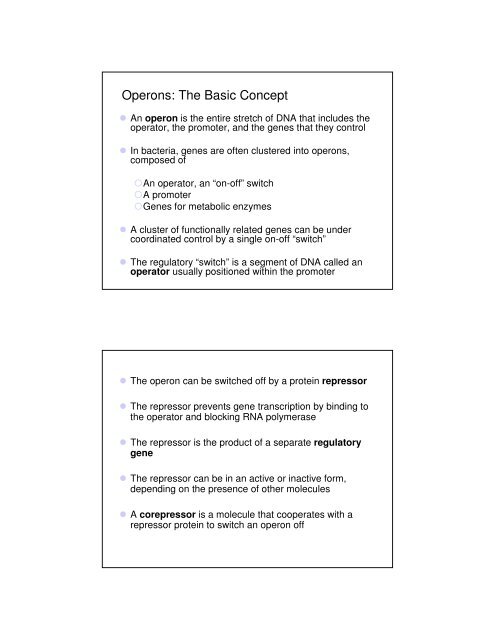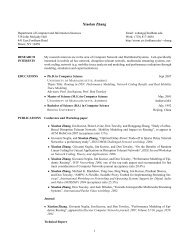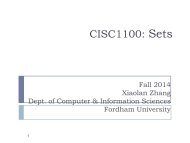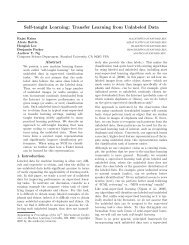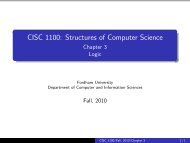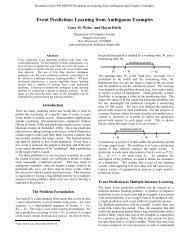Basic Principles of Transcription and Translation - Computer ...
Basic Principles of Transcription and Translation - Computer ...
Basic Principles of Transcription and Translation - Computer ...
Create successful ePaper yourself
Turn your PDF publications into a flip-book with our unique Google optimized e-Paper software.
Operons: The <strong>Basic</strong> Concept<br />
An operon is the entire stretch <strong>of</strong> DNA that includes the<br />
operator, the promoter, <strong>and</strong> the genes that they control<br />
In bacteria, genes are <strong>of</strong>ten clustered into operons,<br />
composed <strong>of</strong><br />
An operator, an “on-<strong>of</strong>f” switch<br />
A promoter<br />
Genes for metabolic enzymes<br />
A cluster <strong>of</strong> functionally related genes can be under<br />
coordinated control by a single on-<strong>of</strong>f “switch”<br />
The regulatory “switch” is a segment <strong>of</strong> DNA called an<br />
operator usually positioned within the promoter<br />
The operon can be switched <strong>of</strong>f by a protein repressor<br />
The repressor prevents gene transcription by binding to<br />
the operator <strong>and</strong> blocking RNA polymerase<br />
The repressor is the product <strong>of</strong> a separate regulatory<br />
gene<br />
The repressor can be in an active or inactive form,<br />
depending on the presence <strong>of</strong> other molecules<br />
A corepressor is a molecule that cooperates with a<br />
repressor protein to switch an operon <strong>of</strong>f


